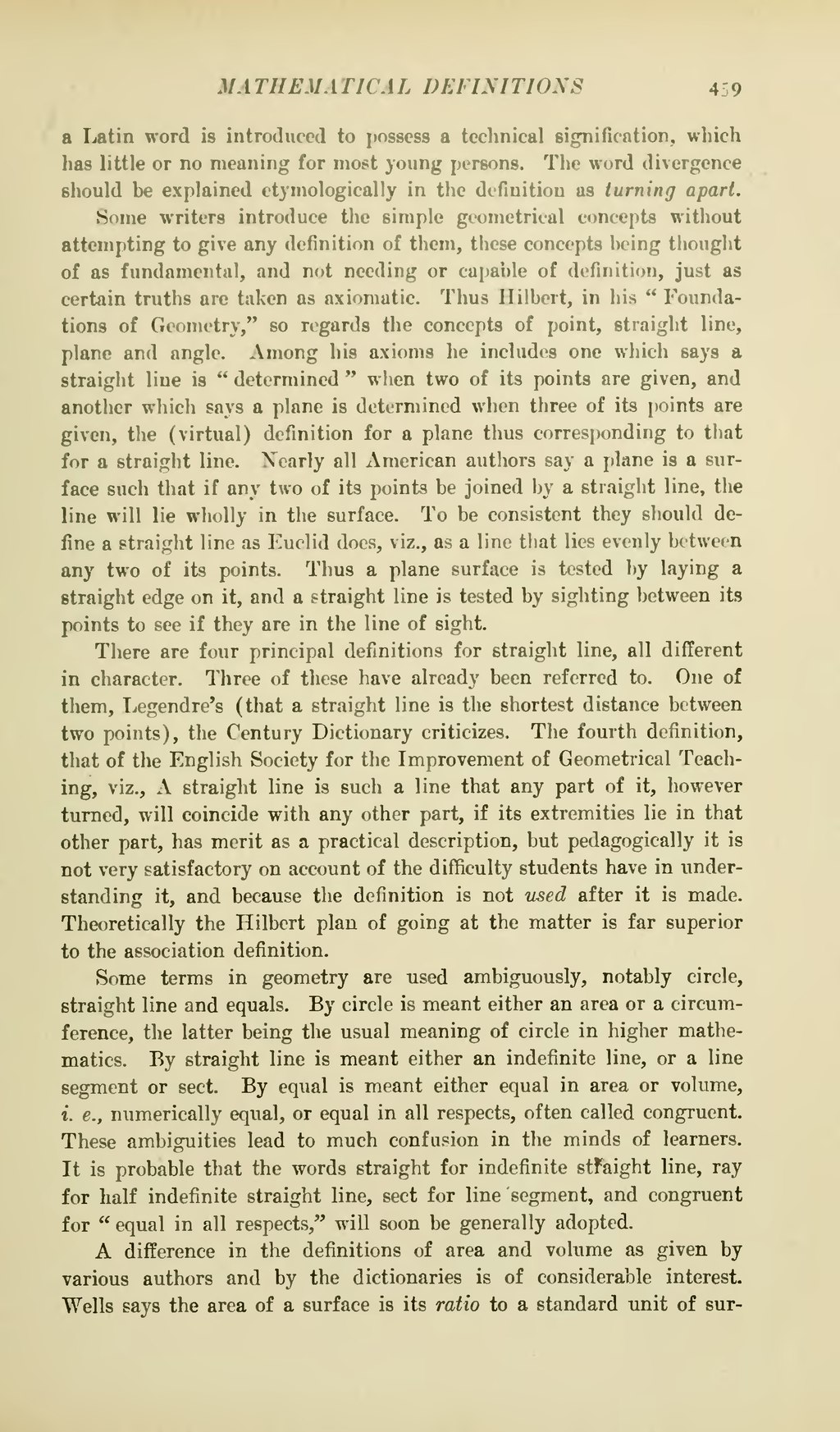a Latin word is introduced to possess a technical signification, which has little or no meaning for most young persons. The word divergence should be explained etymologically in the definition as turning apart.
Some writers introduce the simple geometrical concepts without attempting to give any definition of them, these concepts being thought of as fundamental, and not needing or capable of definition, just as certain truths are taken as axiomatic. Thus Hilbert, in his "Foundations of Geometry," so regards the concepts of point, straight line, plane and angle. Among his axioms he includes one which says a straight line is "determined" when two of its points are given, and another which says a plane is determined when three of its points are given, the (virtual) definition for a plane thus corresponding to that for a straight line. Nearly all American authors say a plane is a surface such that if any two of its points be joined by a straight line, the line will lie wholly in the surface. To be consistent they should define a straight line as Euclid does, viz., as a line that lies evenly between any two of its points. Thus a plane surface is tested by laying a straight edge on it, and a straight line is tested by sighting between its points to see if they are in the line of sight.
There are four principal definitions for straight line, all different in character. Three of these have already been referred to. One of them, Legendre's (that a straight line is the shortest distance between two points), the Century Dictionary criticizes. The fourth definition, that of the English Society for the Improvement of Geometrical Teaching, viz., A straight line is such a line that any part of it, however turned, will coincide with any other part, if its extremities lie in that other part, has merit as a practical description, but pedagogically it is not very satisfactory on account of the difficulty students have in understanding it, and because the definition is not used after it is made. Theoretically the Hilbert plan of going at the matter is far superior to the association definition.
Some terms in geometry are used ambiguously, notably circle, straight line and equals. By circle is meant either an area or a circumference, the latter being the usual meaning of circle in higher mathematics. By straight line is meant either an indefinite line, or a line segment or sect. By equal is meant either equal in area or volume, i. e., numerically equal, or equal in all respects, often called congruent. These ambiguities lead to much confusion in the minds of learners. It is probable that the words straight for indefinite straight line, ray for half indefinite straight line, sect for line segment, and congruent for "equal in all respects," will soon be generally adopted.
A difference in the definitions of area and volume as given by various authors and by the dictionaries is of considerable interest. Wells says the area of a surface is its ratio to a standard unit of sur-
